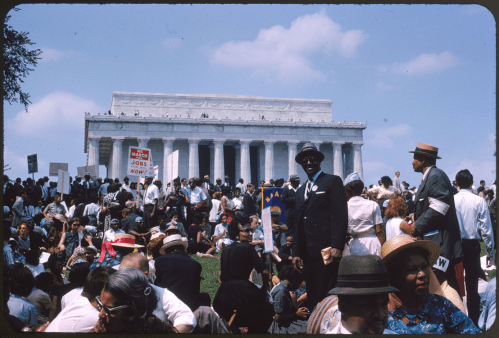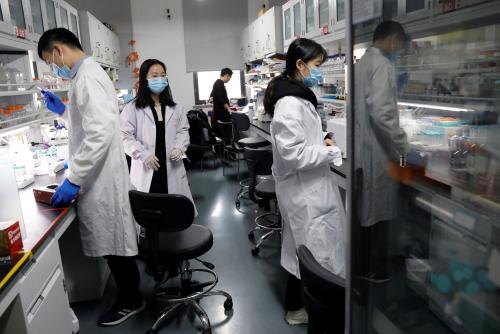June 20 is World Refugee Day, a time to remember the millions of men, women, and children who have crossed international borders to flee persecution and violence in their homelands. It is also a day to pay tribute to the United Nations High Commissioner for Refugees (UNHCR), which is helping them find new lives abroad and has been championing the rights of refugees and asylum seekers for over fifty years.
But World Refugee Day is also a time to acknowledge the far larger number of persons who live as refugees in their own countries, and for whom neither UNHCR nor any other UN agency has a formal mandate. Sometimes called “internal refugees” but known in trade terms as internally displaced persons (IDPs), these are people forced from their homes by conflict, ethnic strife, and egregious human rights abuses but, unlike refugees, have not crossed a border. Because they are often persecuted by their own government and have no international agency to turn to, IDPs are generally in more desperate straits than refugees. They also outnumber refugees two to one. Refugee numbers have declined to 11.5 million, while the number of internal refugees has increased to between 20 and 25 million in more than 40 countries.
Consider some recent cases. During the war in Afghanistan in 2001, 200,000 people managed to cross into Pakistan as refugees whereas the number of internal refugees soared to two million. In the Iraq war in 2003, hundreds of thousands of displaced people remained at risk inside the country while only a small number fled abroad. In Africa, numerous humanitarian disasters have caused the number of internally displaced persons to outstrip refugees more than ten to one. The latest figures show 1.3 million people displaced by conflict inside Uganda, 2.3 million in the Democratic Republic of the Congo and 6 million in Sudan. Only 30,000, 469,000, and 703,000 people in each of these countries respectively have become refugees.
In the face of these crises, UNHCR has a limited role with internal refugees, which risks making the agency marginal, even irrelevant, to many of today’s emergencies. For example, UNHCR is involved with five million internally displaced persons worldwide but of these, only one million are in Africa, the continent most ravaged by conflicts and displacement. Its frequent absence can also risk lives, since UNHCR is one of the few organizations aside from the International Committee of the Red Cross with skills in protecting people’s personal safety.
Over the years prominent voices have called for the enlargement of UNHCR’s mandate to include internal refugees, but the very idea triggers strenuous objections from other UN agencies unwilling to yield turf to the refugee agency. UNHCR’s staff is also divided. Some fear the agency would be overwhelmed if it took on the internally displaced. Others fear that protecting people in their own countries would undermine UNHCR’s primary responsibility—defending the right of people to leave their countries and seek asylum abroad.
Largely by default, the international community has settled on a “collaborative approach” under which all the United Nations agencies in the field are expected to work together, coordinated by the UN Emergency Relief Coordinator. But nearly every UN and independent evaluation agrees that this system works poorly. The coordinator does not have the authority to tell powerful operational agencies what to do, so they choose the situations in which they will become involved. The system has been compared to an auction in which agencies bid for or decline roles. In the Darfur region of Sudan, UNHCR said “no” to the management of camps, so the job went to inexperienced agencies to the detriment of the displaced. In Uganda, UNICEF waited until 2005 to agree to deploy three additional child protection officers beyond the few already there even though tens of thousands of children, called “night commuters,” flee every night to cities and smaller villages to escape abduction and maiming by rebels.
While formal responsibility for the welfare and security of IDPs rests with their own governments, international accountability is also essential to protecting the internally displaced. But under today’s arrangements, no one knows for sure which agency or combination thereof will become involved in new humanitarian and human rights emergencies.
The only way to make the collaborative approach work is to make collaboration mandatory. The emergency relief coordinator should have the authority to assign responsibilities to agencies and enforce an effective division of labor in the field. Another solution would be to enlarge UNHCR’s mandate to empower it to assume more of a leadership role with internally displaced persons. This need not sideline other agencies, such as the World Food Program, the UN Development Fund, UNICEF or non-governmental groups, since UNHCR would have to work with them as it does when protecting refugees. UNHCR’s concerns about asylum should be respected but not allowed to interfere with efforts to improve protection for far larger numbers of internal refugees. As Assistant High Commissioner Kamel Morjane has argued: “It is often neither ethical nor practical to distinguish between human beings because of a border they may or may not have crossed.”
Georgetown University’s Susan Martin has proposed a more radical alternative: the creation of a new agency, a High Commissioner for Forced Migrants, to embrace both refugees and internally displaced persons. Rather than make internally displaced persons “an afterthought” to a refugee agency with other priorities, Martin calls for a fresh start, since the current international system is broken when it comes to those uprooted in their home countries. Hilary Benn, Britain’s secretary of state for international development, put it another way: “Is it really sensible that we have different systems for dealing with people fleeing their homes dependent on whether they happen to have crossed an international border?”
World Refugee Day is both the time to reflect and to begin to act on ideas for reworking the UN’s protection of uprooted peoples, especially those within their own countries who constitute the biggest gap in the international humanitarian response system. Addressing their plight is more than a humanitarian issue. Millions of people caught up in civil wars without the basic necessities of life can disrupt the stability of their own countries, which in turn can become breeding grounds for lawlessness, civil war, and international terrorism.


Commentary
Op-ed“Internal Refugees” Need Attention on World Refugee Day
June 20, 2005